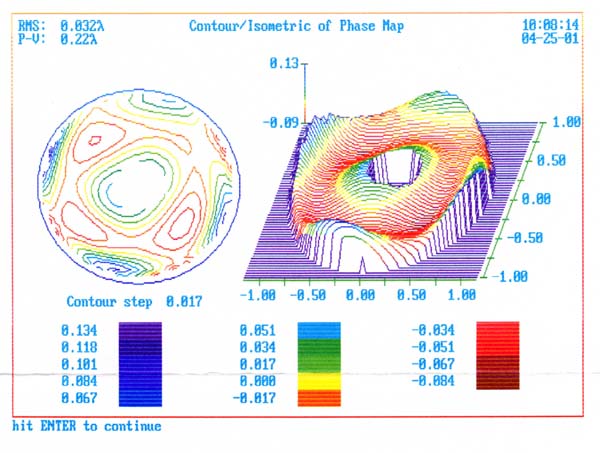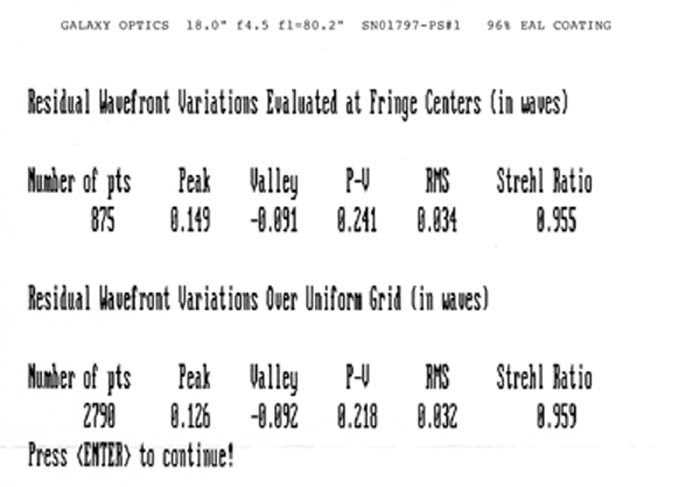A wood bar suspending from the top ring is used to move the telescope downward: I grab it and pull down when I sweep the sky vertically. The light shroud was renewed in 2010: the present shroud was made by AstroSystems, Colorado, USA. The light shield is attached over the eyepiece.
Major modification in 2016 and after
* The Pahse 4 Focuser (AstroSystems) was replaced with the Feather Touch Focuser.
* Installing the filter slider: The Astrocrumb FilterSlide Mark II
* The connection method between truss poles and the top ring (secondary cage) was changed from the wooden wedge & pole seat to the crushed-tube method.
Two finders, the Telrad and the 50 mm erect finders, are installed. At the beginning in 2001 I employed the Telrad but it was bulky and I chaged to piggyback ride Regal Quick-Finder on the 50 mm finder. I go t back to the Telrad as it is easier to use.
The eyepiece, I usually use for comet hunting, is Ethos 21 mm with 97x and 1.0˚ actual field of view (FOV). A light shield is placed over a white plastic part on the eyepiece. Another eyepiece that I use is Planocular 30 mm, manufactured in Germany with 88˚ apparent FOV, which is combined with Parracor with 78x and 1.1 ˚ apparent FOV. Once I used Planocular 30 mm alone with 68x and 1.3 ˚ actual FOV.
I replaced the focuser, the Phase 4 Focuser (AstroSystems), with the Feather Touch Focuser in 2016 because the Phase 4 was broken.
Right: The dew caps and light shield
The dew shield made by insulator for water supply pipe (white colored) is placed on the Telrad Finder and the eyepiece of the 50 mm finder. Only when I peer into finders I remove the dew shields. A long dew shield hood is placed for the objective of 50 mm finder.
Nexus DSC
Lower left: Filter slider
Three filters, (IDAS LPS-P2, Lumicon Comet, Lumicon OIII, are equipped in the US made filter slider, The Astrocrumb FilterSlide Mark II. The dew remover (heater) is built-in in the slider. I often apply LPS-P2 filter under the condition of the moonlight or enhanced light pollution due to hazy sky.
Right: iPad mini2 (screen shot)
The digital map, SkySarari 5 Pro, is indicated on the iPad mini2. The iPad mini2 receives the signal from the Nexus DSC via WiFi and indicates the map linked with the FOV of the comet-seeker. To identify DSOs is very easy because the map shown on the screen is always linked with the FOV.
A home-made case for iPad mini2 (left) and a carry case for Nexus DSC.
Lower left: Inside the cases
Aluminum form mat is inside of the case for iPad min2 to keep it warm. It makes the lifetime of the battery longer.
Right: Rear view
The power line extends from the rocker box where the battery is placed to the secondary cage via the heater controller. There are three heaters; the secondary mirror, the eyepiece and the filter slider. Kendrick Dew Remover is used in the secondary mirror and the eyepiece.
Right: Front view of the telescope
Right: Top view of 18 point flotation cell.
Insulator used for truss poles
Above: Insulator used after July 2017. There is no split like the insulator below. This sponge is for 22 to 23 mm inner dimameter but applied to 25 mm alminium pole. Upon inserting the insulator into the pole, the lubricant was sprayed both on the pole and the inner part of the sponge. Gripping feeling is better than the previous one and slender. Easy to use.
Below: Insulator used until June 2017. A split type insulator that is fixed using a tape.
Multifunctional stepladder
Right: The case of the iPad mini 2 is opened. Only when I look at the map I open the case to keep the inside warm for longevity of the battery.
Top of this page
Loading
| |
1: primary mirror with PVC cap (sealed in the plastic bag with a zipper with silica gel), 2: step for loading, 3: eight truss-tube poles, 4: eyepiece box, 5: bino-viewer box, 6: rocker box, 7: mirror box, 8: top ring (secondary cage), 9: stepladder
Right: insulator is used in summer.
Setting up
Center: Inside the mirror box. There is sling that hold the edge of the primari mirror. Two out of three mirror clips are on the photo.
Right: The primary mirror is installed with the home-made white PVC cap.
Lower left: The white PCV cap removed from the primary mirror and empty plastic bag with the zipper.
Center: Inserted eight truss poles into the pole clumps.
Right: The top ring (secondary cage) placed on the poles. The wooden pole seats that were used with the wooden wedge until June 2017 function as a guide of poles to keep them in correct position.
| |
Center: All poles were tightened with bolts and nuts.
Right: Tighten the lower end of poles in the pole clumps using the nobs. The other thing to set up is installing the light shroud, finders and etc.
Top of this page


